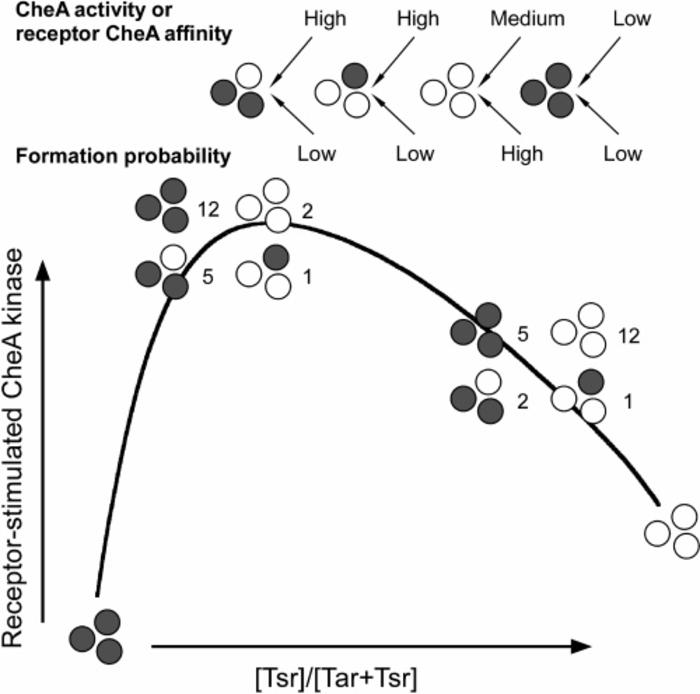
Cooperative Signaling Among Bacterial Chemoreceptors
The chemoreceptors Tsr and Tar are known to form trimers. We introduce a mathematical model for interaction between Tsr and Tar within trimers to explain the observed increase in sensitivity within mixed populations of receptors compared to homogenous populations.
 download preprint
download preprint
BibTeX
@article{Lai:2005:CS,
author = {Run-Zhi Lai and
Josiah Manson and
Arjan Bormans and
Roger Draheim and
Ngoc Nguyen and
Michael Manson},
title = {Cooperative Signaling Among Bacterial Chemoreceptors},
journal = {Biochemistry},
volume = {44},
number = {43},
year = {2005},
pages = {14298-14307},
}
Abstract
Four chemoreceptors in Escherichia coli mediate responses to chemicals in the environment. The receptors self-associate and localize to the cell poles. This aggregation implies that interactions among receptors are important parameters of signal processing during chemotaxis. We examined this phenomenon using a receptor-coupled in vitro assay of CheA kinase activity. The ability of homogeneous populations of the serine receptor Tsr and the aspartate receptor Tar to stimulate CheA was directly proportional to the ratio of the receptor to total protein in cell membranes up to a fraction of 50%. Membranes containing mixed populations of Tar and Tsr supported an up to 4-fold greater stimulation of CheA than expected on the basis of the contributions of the individual receptors. Peak activity was seen at a Tar:Tsr ratio of 1:4. This synergy was observed only when the two proteins were expressed simultaneously, suggesting that, under our conditions, the fundamental "cooperative receptor unit" is relatively static, even in the absence of CheA and CheW. Finally, we observed that inhibition of receptor-stimulated CheA activity by serine or aspartate required significantly higher concentrations of ligand for membranes containing mixed Tsr and Tar populations than for membranes containing only Tsr (up to 10(2)-fold more serine) or Tar (up to 10(4)-fold more aspartate). Together with recent analyses of the interactions of Tsr and Tar in vivo, our results reveal the emergent properties of mixed receptor populations and emphasize their importance in the integrated signal processing that underlies bacterial chemotaxis.
License
The images, executables, and code supplied are from the web page http://josiahmanson.com. These materials are free to use for non-commercial purposes. Any works that use materials from this web page should acknowledge Josiah Manson and the paper Cooperative Signaling Among Bacterial Chemoreceptors. For commercial use, please contact Josiah Manson (josiahmanson@gmail.com).